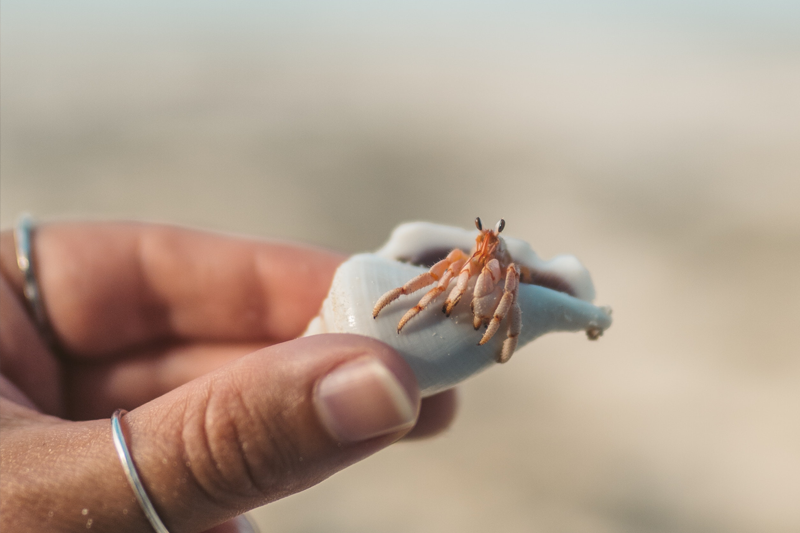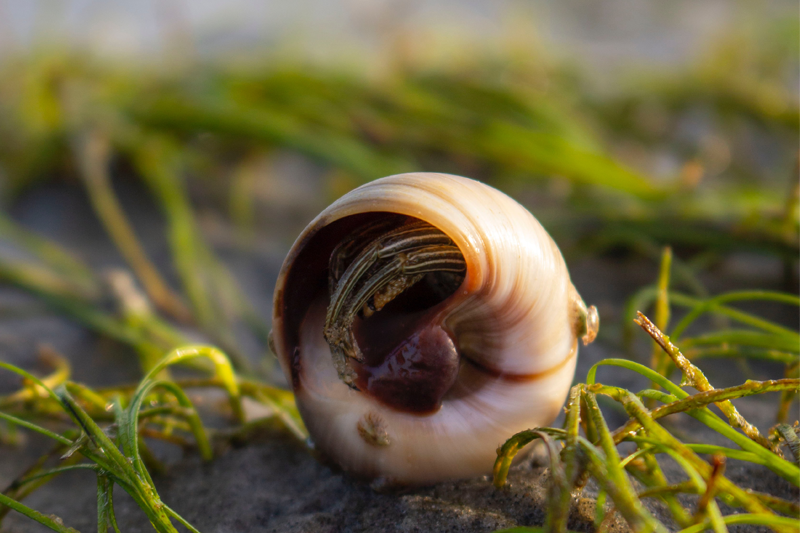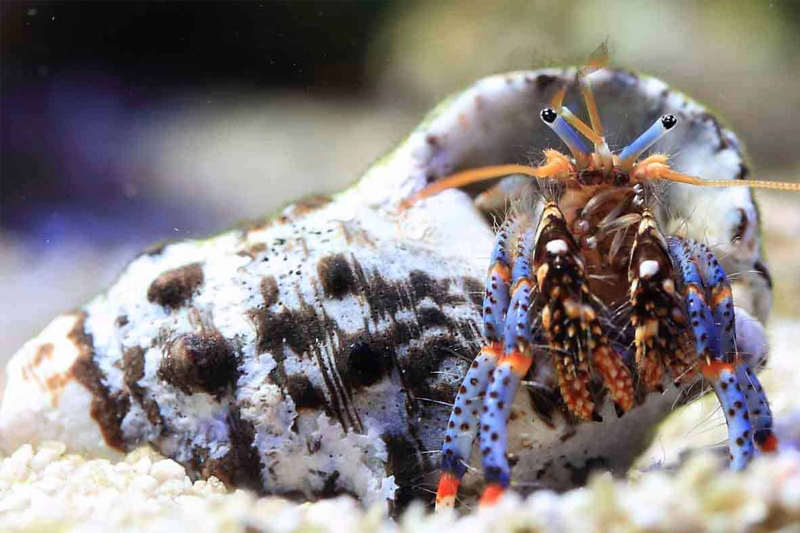Crabs are typically found in marine environments and have a hard exoskeleton that provides protection and support. They also have two pairs of claws, which they use for hunting and defense.
Hermit crabs, on the other hand, are found in both marine and terrestrial environments. They have a soft exoskeleton, which means they are not as well protected as crabs. To make up for this, they carry around empty shells that they can retreat into for protection. They have one pair of claws and also use empty shells for protection.
Another difference is that crabs have a fixed gill structure for breathing, whereas hermit crabs have a more primitive gill structure, which require moist environment for breathing.
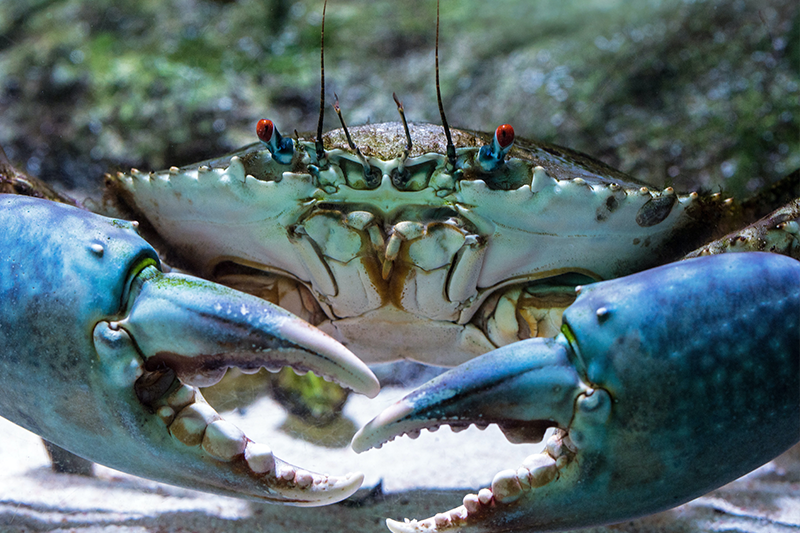
Key Similarities of Hermit Crabs and Crabs
Hermit crabs and crabs are both members of the crustacean family and share some similarities.
- Both hermit crabs and crabs have a segmented body and a hard exoskeleton that provides protection and support.
- Both have a pair of antennae that they use for sensing their environment and for communication with other members of their species.
- Both have appendages for movement, such as legs and claws.
- Both reproduce through external fertilization, and the females of both species carry their eggs on their bodies until they hatch.
- Both are scavengers and opportunistic feeders, meaning they will eat a variety of different foods depending on what is available in their environment.
- Both hermit crabs and crabs have a life cycle that includes a planktonic larval stage followed by a metamorphosis into an adult.
Legs of a Hermit Crab vs. Crab
Hermit crabs have 5 pairs of legs which are modified to form their pincers. Do note that hermit crab’s right pincers are always larger than the other. Their pincers serves as protective mechanism when they enter their shells. It’s like a door to shut it when hermit crabs are inside.
Then their second and third pair of legs functions for walking. As for their fourth and fifth pair of legs, they use it to grip the central column of their snail shell that they use for shelter and protection.
Like hermit crabs, crab also have 5 pairs of legs. 4 out of the 5 pairs of their legs are used for walking, while the front pair of legs is then used to defend themselves from predators. Basically, their pincers.
Both hermit crabs and crabs used their pincers for survival, this is their ultimate tool/weapon. They use it for foraging, scavenging, eating, and they also use this for fighting other hermit crabs or crabs.
Eyes of a Hermit Crab vs. Crab
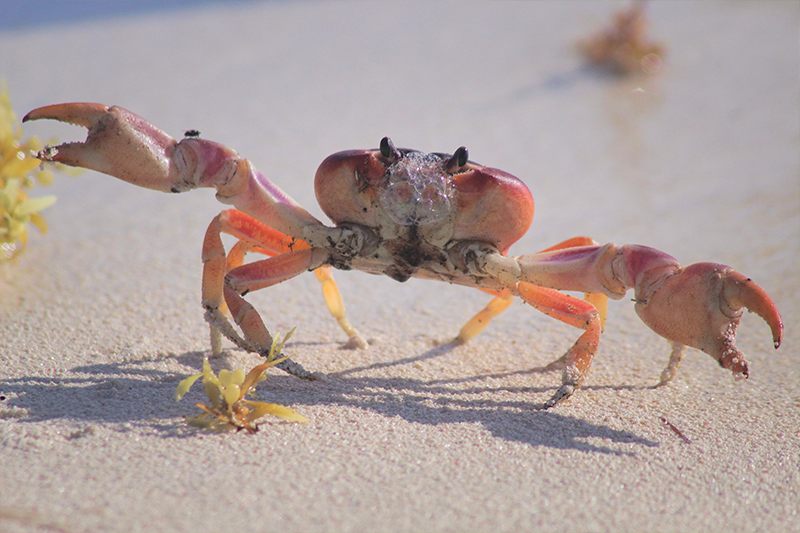
For hermit crabs, they have two large compound eyes that can see surroundings at 360 degrees, it helps them greatly to detect motion and also give them good vision at night time when they are the most active.
On the other hand, crabs also have a compound eye. They have a pair of primary compound eyes, which consists of several thousand optical units on independently moving eyes stalks that are able to track movement on their surroundings.
Antennae of the Hermit Crab vs. Crab
Hermit crabs have 2 pairs of antenna. The purpose of the long outer pair is for sensory organs which will enable them to touch and feel their path or what’s on their path when they walk.
They also have an inner bent pair of antennae that serves as for taste and smell.
As for the crabs, they also have antennae which they use for smelling and sensing chemicals in the water. These also enabled them to feel the current and movement.
Lifespan of Hermit Crabs vs. Crabs Live?
Hermit crabs in their natural habitat can live for more than 30 years while crabs have an estimated lifespan between 3 years and 12 years.
Reproduction of Hermit Crabs vs. Crabs
Hermit crabs mate only in seawater and twice a year. Both males and females emerge partially from their shell and then place each other’s stomachs together for them to mate.
A female hermit crabs carries between 800 to 50,000 eggs under their abdomen. And when they are ready to hatch, female hermit crabs then proceeds to the seawater to hatch these eggs. These eggs though will not last that long since these eggs will get eaten by seawater creatures.
Crabs on the other hand, the males will only mate with females when molting already occured in the female and while its new shell is still soft. And interestingly, female crabs can store the male crabs sperm for a long time until it’s ready to fertilize them.
Female crabs can have up to 200,000 eggs! Of which she can carry for several weeks until it’s ready to hatch. Their eggs once hatched will swim without any guidance or help from their mothers. And just like hermit crabs, not all of the hatched eggs will survive since they are highly vulnerable to predators as well.
Can Hermit Crabs and Crabs Live Together as Pets?
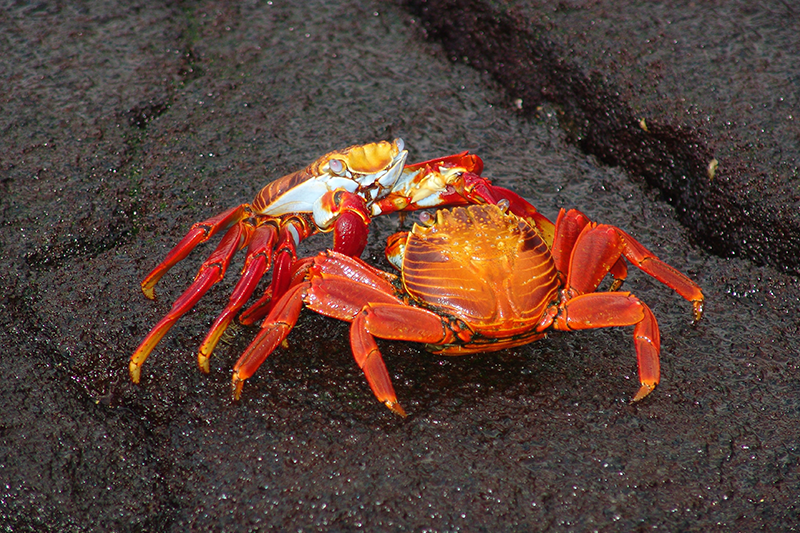
It is generally not recommended to keep hermit crabs and crabs together as pets, as they have different environmental and dietary needs.
Hermit crabs are typically found in humid environments and need a warm and humid habitat to thrive. They also require a diet that includes fruits, vegetables, and algae.
Crabs, on the other hand, are typically found in marine environments and need a saltwater habitat. They also require a diet that includes meat and shellfish.
Additionally, hermit crabs and crabs may have different temperature and humidity needs, which can make it difficult to provide an environment that is suitable for both species.
It is possible to keep hermit crabs and crabs together in an aquarium or terrarium if you are able to provide separate areas for each species that meet their specific needs, but it will require a lot of research, planning, and monitoring to make sure that both species have an appropriate habitat and diet.
In general, it is recommended to only keep one species of crustacean as a pet to make sure that they have the best possible chance of survival and well-being.
Is there a chance that crabs might eat hermit crabs?
Yes, it is possible that crabs may eat hermit crabs. Crabs are opportunistic feeders and will eat a variety of different foods depending on what is available in their environment. If hermit crabs are present in the same habitat as crabs and are small enough to be considered prey, crabs may attempt to eat them.
It is also worth noting that different species of crabs have different dietary preferences, and some may be more inclined to eat hermit crabs than others.


